The Honda VFR 800, also known as the Interceptor, is popular as an all-around motorcycle. There are various generations of the VFR 800. I’ll list the various specs for each so you can compare and make the right buying decision.
The Honda VFR 800 model is powered by a V4 4-stroke motor that could produce a maximum top acceleration of 0 – 100 km/h (0 – 62 mph). Its maximum output power reaches 107 hp (78.1 kW) at 10,500 rpm. The maximum torque is 80 Nm (59 ft-lb) at 8,750 RPM.
The VFR 800’s braking system features a double disc that is on full-radials. Its sturdy body is completed with a bright LED headlight, ensuring that night-riding is safe.
Read on to learn more about the Honda VFR (V-Four Racing) 800 specs and review, its pros and cons, and some tips for maintaining it.
About the Honda VFR 800

Honda manufactured the VFR 800 model as a sport-touring bike in 1998. The 5th generation VFR 800 Fi or RC46 was manufactured between 1998 and 2001.
The company added two side-mounted radiators instead of one at the front engine. Honda also moved the camshaft’s gear drive from the engine’s center to its right side.
2000 Honda VFR 800
Honda updated the 2000 VFR 800 motorcycle with oxygen sensors, a catalytic converter, and an EFI system that enters a closed-loop mode when cruising. The updated VFR 800 came with a Honda Ignition Security System (H.I.S.S.) that immobilizes the system to prevent theft.
Furthermore, Honda changed the rear-view mirror’s rubberized stalks to rustproof metals. These are some of the other modifications for the 2000 VFR 800.
2002-2014 VFR 800 VTEC (RC46)
Honda built the 2002-2014 VFR 800 VTEC (RC46) as the 6th generation model. This model replaced the gear-driven cams with chain-driven cams. Also, it featured an optional ABS, DCBS-linked brakes, optional hard luggage, and a pair of under-seat exhausts.
2006 Honda VFR 800
The 2006 Honda VFR 800 was upgraded to a re-mapped ECU for a better transition into VTEC. Some of the minor changes were issues with the electrical wirings and the signal lenses.
They also fixed these problems for a more efficient charging system. Furthermore, Honda designed the 2014 VFR 800 F (RC79) to replace the RC46.
2014 VFR 800 F (RC79)
In 2009, Honda temporarily phased out the VFR 800 and introduced the VFR 1200 F. Later on, the company upgraded the VFR 800 in 2013 and re-introduced it to the market. This is the 2014 VFR 800 F (RC79), the 8th generation model.
This new model has two versions: The Deluxe and Standard. The Deluxe version is sold outside the U.S. and features a center stand, traction control, self-canceling signals, grip heaters, and an ABS.
Additionally, the new model has almost the same chassis and engine as the 6th generation model. It features an updated LED lighting, lighter wheels, a new instrument panel, traction control, and improved body aerodynamics.
Honda VFR 800 Specs and Features
Engine
The VFR 800’s fuel-injected engine delivers efficient power as a touring motorcycle. It features a 90-degree V4, a four-stroke motor that produces a maximum output power of 107 hp (78.1 kW) at 10,500 RPM. Its maximum torque is 80 Nm (59 ft-lb) at 8,750 RPM.
The engine’s capacity is 782.0 cubic centimeters (47.72 cubic inches) with a bore/stroke of 72.0 by 48.0 mm (2.8 by 1.9 in). Each of the four cylinders contains four valves and uses a liquid cooling system.
Its 6-speed gearbox provides sufficient function and reliability. The fuel tank capacity is 20.8 liter to 22 liters (5.5 gallons to 5.81 gallons).
Dimensions
The VFR 800’s wheelbase measures 1,460 mm (57.5 in). It is 2,120 mm (83.5 in) long, 735 mm (28.9 in) wide, and 1,195 mm (47.0 in) tall. Its wet weight is 242 kg (534 lb).
Exterior
The 800’s classy and impressive exterior can satisfy most choosy riders. The seat height measures 805 mm (31.7 in) at its lowest setting, if adjustable.
Its steel/aluminum frame comes in various colors. Some of these shades are olive, red, and beige colors. An LCD panel with a fuel gauge, ambient temperature gauge, and a clock completes its trendy exterior.
Tires
The tires’ 10-spoke aluminum design is superb for providing a stable ride. They are lightweight, with the front tires’ rim dimensions at 120/70-ZR17 and the rear tires’ rim dimensions at 180/55-ZR17.
Drivetrain
The VFR 800’s transmission is a 6-speed manual chain drive with constant mesh and a multi-plate clutch.
Suspension
The front suspension consists of a 41 mm Honda Multi-Action System (HMAS). It provides a cartridge-style telescopic fork with a preload-adjustable damper at 120 mm (4.7 in) travel.
Lighting
The headlight is LED, and the rear taillight is clearly visible from a distance. These lights ensure that you are safe even when driving during night time.
Brakes
The front brakes’ disc dimension is 296 mm (11.7 in), while the rear brakes’ disc dimension is 256 mm (10.1). The front brakes feature a double-disc, a combined 3-piston caliper (ABS), sintered metal pads.
Meanwhile, the rear brakes feature a single disc, combined 3-piston calipers (ABS), and sintered metal pads. [1] Some versions of the VFR 800 provide a dual CBS-linked braking system. This system allows the hand lever’s simultaneous control and the foot pedal of both the front and rear brakes.
Ignition
The VFR 800’s ignition is digital. Hence, you will not have any issues when turning it on. The Honda Ignition Security System (H.I.S.S.) immobilizes the system when tampered with to prevent theft.
Unique Features
One of the unique features of the Honda VFR 800 is its VTEC system. The VTEC increases the engine’s peak horsepower. Only two of the 4 valves operate at lower engine speeds.
All of the four valves in each cylinder operate when the speed is above 6,800 rpm. Honda lowered this speed in 2006 due to some complaints about its abrupt power transition. This process is activated electronically through an oil spool valve that sends a series of reactions to open the valves.
How Much Horsepower Does a Honda Nighthawk 750 Have?
In the below video, Jeff Stone reviews the Honda VFR 800’s features and specifications:
This video shows the pros and cons of the Honda VFR 800:
Honda VFR 800 Top Speed
The Honda VFR 800 goes at a top speed of 146 mph (235 km/h). Some users reported that it could reach up to 155 mph (249.45 km/h). The maximum torque is 55.32 ft/lb (75 Nm) at 8,500 RPM.

Cost of Honda VFR 800
The price of the Honda VFR varies from one region to another. The price ranges between $12,000 and $17,800. Used motorcycles cost lesser, even as low as $2,000, depending on the length of use. You can surely find one that fits your budget.
Pros and Cons of the Honda VFR 800
Pros
1. Flexible Engine
The Honda VFR 800’s engine is unique, responsive, and flexible. The engine accelerates quickly, provided that you are in the right gear at the right time. The engine’s casing is durable and is leak-free.
You could also adjust the chain easily. The 800 performs well on the corners, plus the engine revs smoothly.
2. Good Ergonomics
The 800 provides a good, comfortable ride because of its good ergonomics. The seat height for many models is adjustable. The sports bike provides a comfortable ride for both the primary rider and pillion, even during long rides.
3. Versatile
The Honda VFR 800 is an all-rounder motorcycle. You can use it for touring, as a means of transportation, as a workhorse, or for off-road fun.
4. Excellent Build Quality
The VFR 800’s build quality is excellent. Honda made sure the all-rounder motorcycle’s engine, swinging arm, fairing, frame, and other parts are durable and solidly built. Your 800 will last longer if you maintain it regularly.
Cons
1. CBS Brakes Not for Everyone
Honda VFR 800’s CBS-linked brakes are good for slippery roads. Nevertheless, some riders prefer the non-linked setup because they can use each brake independently.
2. Difficult Accessibility to Some Parts
A few customers reported that they had difficulty checking the oil engine because they have to be on their knees to do it.
What to Consider Before Buying a Honda Nighthawk
Frequently Asked Questions about the Honda VFR 800
How Fast Is a Honda VFR 800?
The Honda VFR 800 could reach a speed of 146 mph (235 km/h). The maximum torque of this speed is 55.32 ft/lb (75.0 Nm) at 8,500 RPM. Some riders reported higher speeds, but experts still consider their statements anecdotal.
Does Honda Still Make the VFR 800?
Honda temporarily stopped the VFR 800 in the U.S. after 2009 with the introduction of the VFR 1200 F. Afterward. The company intended to replace the VFR 800 with the 2014 VFR 800 F too.
However, this plan did not stop many customers who continue to buy the VFR 800 and its generation models throughout the world.
How Much Does the Honda VFR 800 Weigh?
The Honda VFR 800’s wet weight is 534 pounds or 242 kilograms. The VFR 800’s dry weight is 480.6 pounds or 218 kilograms.
Next, let’s proceed to some tips for maintaining your Honda VFR 800 in tiptop condition.
Tips for Maintaining Your Honda VFR 800
1. Wash Your Honda VFR 800 Regularly
Even motorcycles need regular ‘baths.’ Nevertheless, DO NOT clean the engine while still hot. Allow the engine to cool before starting. Avoid using a pressure washer on the electrical parts of your motorbike too.
The Honda may be water-resistant, but it is not waterproof. You can use pressure water under the fenders and for the wheel rims, but never on other motorcycle’s openings and electrical parts.
- Use the pressure washer carefully because it could squirt and enter sensitive openings. Too much pressure could also damage your motorcycle’s surface. If you are not used to jet washing or pressure washing, it would be best not to use it;
- For other parts of your Honda VFR 800, you can rinse off the surface dirt first;
- Afterward, use a soft cloth, soap, and water to clean it thoroughly;
- Do not use rough clothing as this can scratch or leave marks on your bike’s surface;
- Also, use only recommended motorcycle cleaners to ensure that it does not damage any parts. [2]
- Afterward, rinse your bike with a copious amount of water again to remove all traces of the cleaning solution. Dry your motorbike and test the brakes and engine before riding. Remember to lubricate the chain.
- Furthermore, you may want to finish off your cleaning job with commercial spray polish. This spray polish will further give your Honda VFR 800 a smooth, elegant look.
- Remember to clean the chain well and lubricate it afterward.
You can clean your motorcycle every week or every after two weeks. But if the dirt is thick due to constant use, you should clean it immediately.

2. Change the Oil Regularly
Check your user’s manual and follow the instructions about changing the oil. For your Honda VFR 800, they recommend that you change the oil after every 8,000 miles. But some users reported that they change oil every after 3,000 miles. You can change your oil anytime you find it contaminated.
3. Change the Filter When Dirty
You have to change the filter whenever you notice that it is dirty. Dirty filters will clog your system and will affect your motorbike’s performance.
4. Maintain Correct Tire Pressure
Check your tires each time you ride your VFR 800. Flat tires can lead to accidents that could endanger your life. The number of pounds per square inch (PSI) should be sufficient and not under or over. Over-inflation could also damage your tires and cause mishaps.
You can check the correct PSI by viewing the correct PSI on the tire’s sidewall. Note that many gas stations provide air compressors.
5. Visit the Honda VFR 800 Motor Shop Annually
You can do most of the minor repairs, but you may want to take your motorcycle to the dealer’s shop for general check-ups annually. This step will ascertain the early detection of major issues. Early detection of problems will decrease your maintenance cost significantly.
Conclusion – Honda VFR800
The Honda VFR800 has successfully survived up to the 8th generation with its V4 liquid-cooled 4-stroke DOHC engine. The 4-valve cylinder and 781.7 ccs (47.70 cu in) capacity remain through all the Honda generations.
The bore x stroke is also uniform at 72.0 mm (2.83 in) x 48.0 mm (1.89 in). Likewise, the fuel delivery, transmission, and ignition are the same for all models.
All the Honda VFR generations use the fuel delivery through a PGM-FI electronic fuel injection, while the ignition is all digital.
On the other hand, all the Honda VFR 800 generations’ transmission features a 6-speed with a multi-plate clutch. The front and rear tires’ measurements remained at 120/70ZR–17 and 180/55ZR-17.
The fuel capacity was slightly different with the 5th, 6th, and 8th generation, but the rest had minor upgrades to improve the motorbike’s performance.
Pick the suitable Honda VFR 800 for your purpose/s and have fun.
Read next:

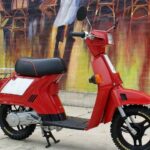
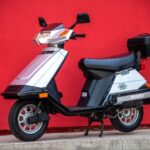
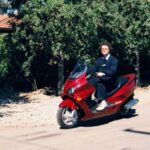
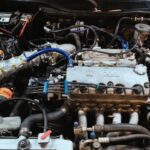
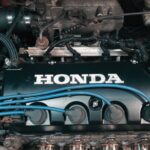
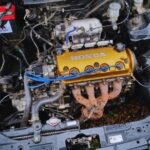


![Read more about the article Mazda vs Honda [Is Mazda More Reliable than Honda?]](https://roadsumo.com/wp-content/uploads/2020/12/mazda-vs-honda-300x200.jpg)